#505th PIR
Text
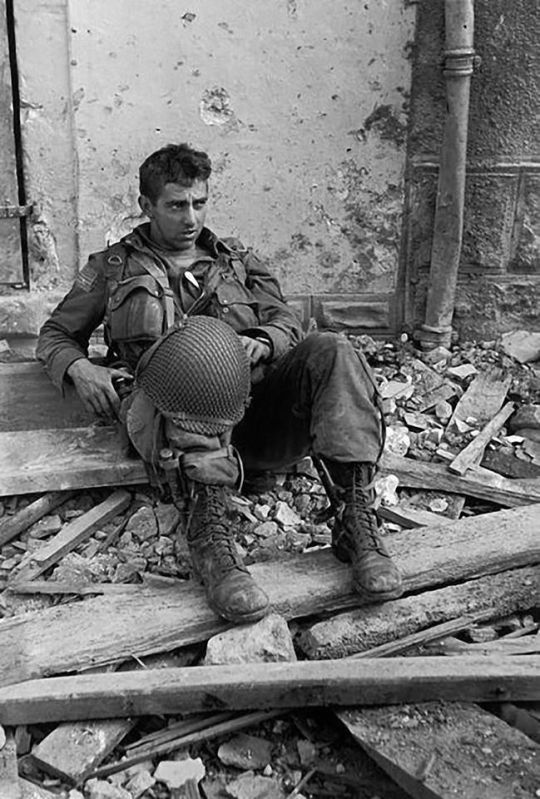
Parachutiste du 505e Régiment d'infanterie parachutiste (505th PIR) de la 82e Division aéroportée américaine (82nd Airborne division) dans les ruines de Saint-Sauveur-le-Vicomte – Bataille de Normandie – 16 juin 1944
Photographe : Robert Capa
©International Center of Photography/Magnum photos
#WWII#opération overlord#operation overlord#bataille de normandie#battle of normandy#coupure du cotentin#82e division aéroportée us#82nd airborne division#505e Régiment d'infanterie parachutiste#505th PIR#robert capa#saint-sauveur-le-vicomte#manche#normandie#normandy#france#16/06/1944#06/1944#1944
93 notes
·
View notes
Text
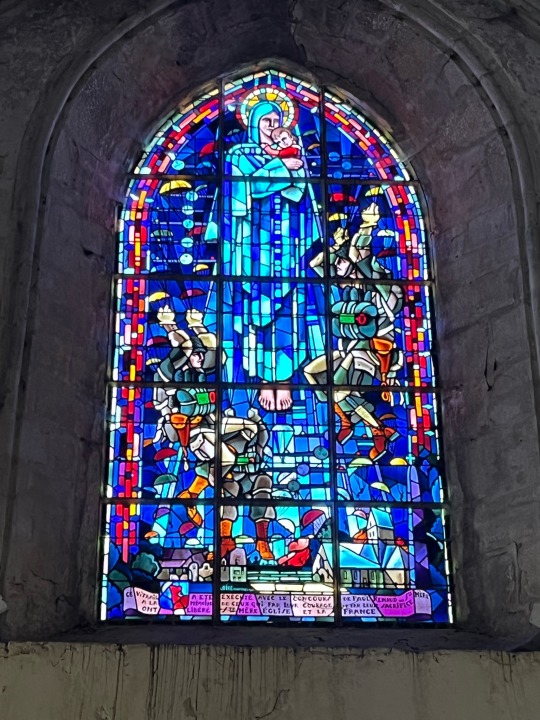
Église Notre-Dame-de-l’Assomption, Sainte-Mere L’Eglise, Cotentin, Normandie, France 🇫🇷
The village’s church is a parachute memorial from the second WW D-Day!
The early airborne landings, at about 01:40, resulted in heavy casualties. Some buildings in town caught fire that night, illuminating the sky, and making easy targets of the descending men. Some were killed by the fire. Many hanging from trees and utility poles were shot.
A well-known incident involved paratrooper John Steele of the 505th Parachute Infantry Regiment (PIR), whose parachute caught on the spire of the town church. He hung there for two hours, pretending to be dead until the Germans took him prisoner. Steele later escaped and rejoined his division when US troops of the 3rd Battalion, 505th Parachute Infantry Regiment attacked the village. The incident was portrayed in the movie The Longest Day by actor Red Buttons. (Wikipedia)

#way home#travel#no filter#beautiful europe#europe#citytrip#history#culture#architecture#art#WW2#cotentin#sainte mère l’église#505th PIR#museum#freedoom
3 notes
·
View notes
Text
505th PIR - DIVISÃO PARAQUEDISTA AMERICANA - Unidade da 82ª Brigada Paraquedista - Parte Final

505th PIR DIVISÃO PARAQUEDISTA
Ativado em julho de 1942 durante a Segunda Guerra Mundial, o 505º Regimento de Infantaria Paraquedista participou da invasão aliada da Sicília, desembarcando posteriormente em Salerno, da Batalha da Normandia, da Holanda e da Batalha do Bulge, mais tarde o regimento foi enviado para a República do Vietnã em 1968 durante a Guerra do Vietnã. Após a Guerra do Vietnã, o 505º participou de diversas operações militares. Entre elas estavam a Operação Fúria Urgente, a Operação Justa Causa, a Operação Escudo do Deserto, a Operação Tempestade no Deserto, a Operação Restaurar a Esperança, a Operação Liberdade Duradoura (OEF) e a Operação Liberdade do Iraque. O envolvimento mais recente do regimento foi no Afeganistão. A Brigada foi destacada para o Afeganistão de julho de 2019 a março de 2020. Atualmente seu 1º e 2º batalhões estão ativos. Ambos os batalhões estão designados para a 3ª Brigada de Combate, 82ª Divisão Aerotransportada em Fort Bragg, Carolina do Norte.
Sob o comando do Coronel James M. Gavin,

James M. Gavin (mostrado aqui como major-general) tornou-se o primeiro comandante do 505º Regimento de Infantaria Paraquedista (PIR) quando o regimento foi ativado em 1942. Gavin mais tarde assumiu o comando da 82ª Divisão Aerotransportada em agosto de 1944 e liderou-a pelo restante. da Segunda Guerra Mundial.
O 505º Regimento de Infantaria Paraquedista (PIR) foi ativado em Fort Benning, Geórgia, em 6 de julho de 1942, durante a Segunda Guerra Mundial, como parte do Comando Aerotransportado dos EUA. Gavin, então com apenas 35 anos, foi um dos primeiros pioneiros aerotransportados, que liderou os homens do 505º em um treinamento extremamente cansativo. No início de 1943, por exemplo, ele anotou em seu diário: "Em 36 horas, o regimento marchou bem mais de 50 milhas, manobrou e apreendeu uma cabeça de vento e a defendeu de contra-ataques enquanto carregava cargas completas de combate e vivia de rações de reserva". Em fevereiro de 1943, o 505º foi designado para a 82ª Divisão Aerotransportada, comandada pelo Major General Matthew Ridgway, então estacionado em Fort Bragg, Carolina do Norte.

Maj. Gen. Ridgway
Os outros dois regimentos servindo ao lado do 505º foram o 504º PIR e o 325º Regimento de Infantaria de Planadores, e outras unidades de apoio. Em abril, em preparação para a invasão aliada da Sicília (codinome Operação Husky), o regimento foi transferido para a Tunísia, no Norte da África, onde completou seis semanas de treinamento. O 505º (organizado em uma equipe de combate regimental com a adição do 3º Batalhão do 504º, junto com o 376º Batalhão de Artilharia de Campo Paraquedista e a Companhia 'C' do 307º Batalhão de Engenheiros Aerotransportados temporariamente anexados) fez seu primeiro salto de combate atrás das linhas inimigas em Gela nas primeiras horas de 10 de julho de 1943, que foi o primeiro salto de combate de tamanho regimental na história do Exército dos Estados Unidos. Os ventos fortes na zona de lançamento do 505º fizeram com que um grande número do regimento se espalhasse por toda a ilha, com até 100 homens desembarcando no setor do Oitavo Exército Britânico. O 505º sofreu pesadas perdas durante a campanha relativamente breve, incluindo o tenente-coronel Arthur F. Gorham, comandante do 1º Batalhão, que foi morto. O regimento retornou então ao Norte da África em agosto para se reformar e absorver os substitutos antes de participar do ataque a Salerno, na noite de 14 de setembro, onde deu seu segundo salto de combate.
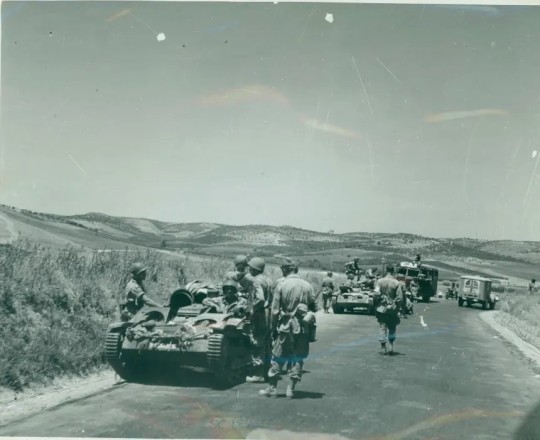
Paraquedistas na Sicília durante a Operação Husky
As duas primeiras operações na Sicília foram em 9 de julho e em Salerno em 13 de setembro de 1943. O ataque inicial à Sicília, pela 505ª Equipe de Combate Regimental de Paraquedas, sob o comando do Coronel Gavin, foi o primeiro ataque de paraquedas de combate de tamanho regimental conduzido por o Exército dos Estados Unidos. O regimento continuou a lutar na campanha italiana, onde o 505º, auxiliado por tanques da 23ª Brigada Blindada britânica, capturou a cidade de Nápoles no início de outubro, ajudando mais tarde os Aliados a romper a Linha Volturno antes de retornar a Nápoles para tarefas de ocupação. Em janeiro de 1944, o 504º, comandado pelo Coronel Reuben Tucker, foi temporariamente destacado para lutar em Anzio. O 504º foi substituído na divisão pelo inexperiente 507º Regimento de Infantaria Paraquedista, sob o comando do Coronel George V. Millet, Jr.
Em preparação para a operação, a divisão foi significativamente reorganizada. Para facilitar a integração das tropas de substituição, o descanso e o reequipamento após os combates na Itália, o 504º PIR não voltou à divisão para a invasão. Dois novos regimentos de infantaria de paraquedas, o 507º e o 508º, forneceram-lhe, junto com o veterano 505º, um regimento de infantaria. Em outubro, Gavin foi promovido a general de brigada e tornou-se comandante assistente de divisão (ADC) da 82ª Divisão Aerotransportada. Gavin foi substituído pelo tenente-coronel Herbert F. Batcheller, ex-oficial executivo do regimento (XO). Logo depois, o 505º foi retirado para o Reino Unido, juntamente com o resto da 82ª Divisão Aerotransportada (menos o 504º PIR), onde começaram a treinar para a Operação Overlord, a invasão aliada da Normandia. Originalmente enviado para a Irlanda do Norte, o 505º foi para Leicestershire, região de Nottinghamshire, na Inglaterra, em fevereiro de 1944 e começou um treinamento extenuante em preparação para a invasão.

Paraquedistas da 505 preparando o embarque para o Dia D
Em 6 de junho de 1944, às 3 da manhã, o 505º Paraquedista estava pousando na Península da Normandia para o terceiro salto de combate do regimento. Foi uma das primeiras unidades aerotransportadas a atingir o solo e libertou a primeira cidade da França, St. Mere-Eglise. Os pára-quedistas saltaram antes do início da invasão - "Hora H". Por causa dessa tradição, de ser o primeiro a entrar na luta, o lema do 505º é “H-Menos”. A unidade recebeu a Menção de Unidade Presidencial. Em setembro de 1944, a unidade participou então da Operação Market Garden, na qual o regimento recebeu uma segunda Menção de Unidade Presidencial. O 505º mais tarde, em dezembro de 1944, lutou na Batalha do Bulge, a maior batalha travada na Frente Ocidental durante a Segunda Guerra Mundial. No final da guerra, o 505º recebeu três menções de unidades estrangeiras distintas: o fourragère Francês, a Ordem Militar Holandesa de Guilherme e o Fourragère Belga. Após a rendição alemã em maio de 1945, o regimento serviu como parte da força de ocupação aliada em Berlim. Três dos cinco membros da 82ª Divisão Aerotransportada que receberam a Cruz de Serviço Distinto duas vezes durante a Segunda Guerra Mundial eram membros do regimento. Eles foram o primeiro comandante do regimento, o então coronel James M. Gavin, o comandante do 1º Batalhão, tenente-coronel Arthur F. Gorham e o comandante do 2º Batalhão, tenente-coronel Benjamin H. Vandervoort.

Paraquedistas na Bélgica
Fonte:
-.-.-.-.-.-.-.-.-.-
No próximo post a apresentação de um novo trabalho
Forte Abraço!
Osmarjun
0 notes
Text


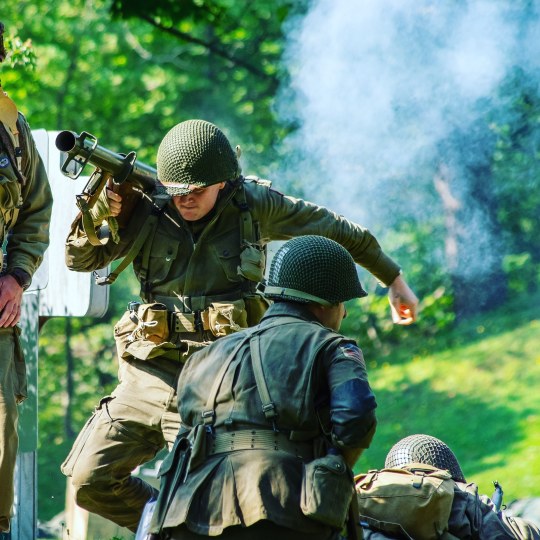
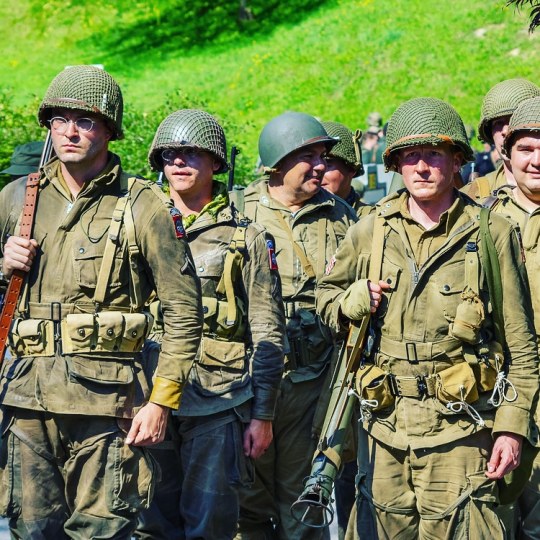
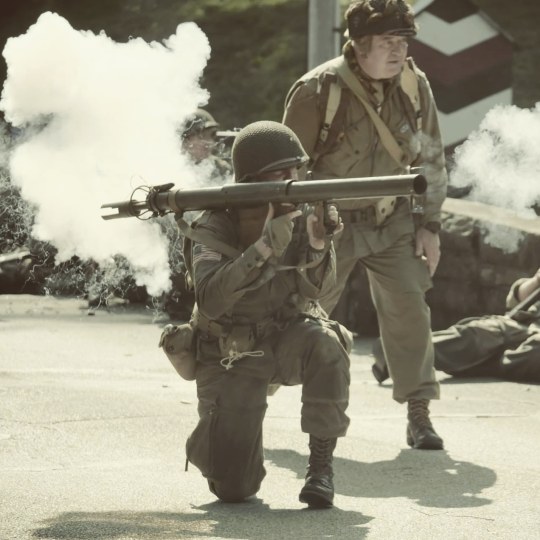




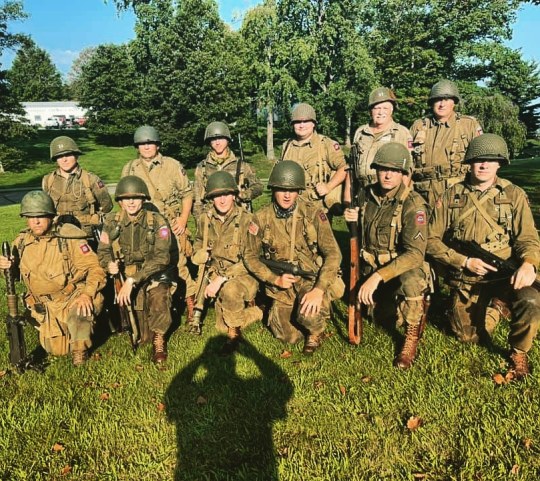
Conneaut, 2021
.
.
.
.
.
#ww2livinghistory#ww2 history blog#ww2 living history#ww2#ww2 reenacting#505 pir#505th pir#82nd airborne#82nd all the way#82ndairborne#82nd airborne#82nd#rocket launch#rocket launcher#bazooka#armylife#army life#army#Airborne
5 notes
·
View notes
Text
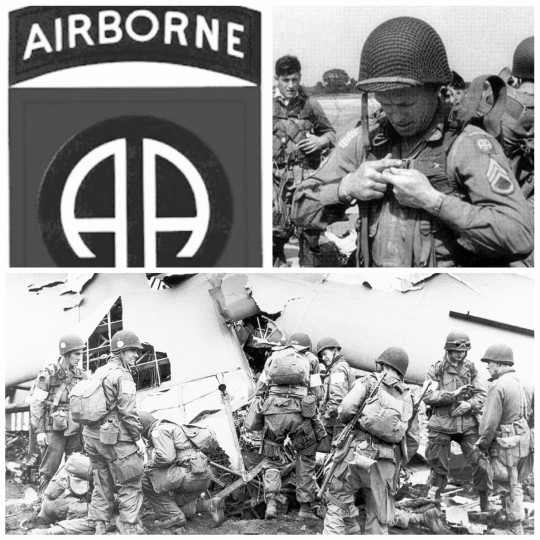
• 82nd Airborne Division
The 82nd Airborne Division is an airborne infantry division of the United States Army established in 1917, shortly after the American entry into World War I. Specializing in parachute assault operations into denied areas.
The 82nd Division was first constituted as an infantry division on August 5th, 1917 during World War I in the National Army. It was organized and formally activated on August 25th, 1917 at Camp Gordon, Georgia. The division consisted entirely of newly conscripted soldiers. The citizens of Atlanta held a contest to give a nickname to the new division. Major General Eben Swift, the commanding general, chose "All American" to reflect the unique composition of the 82nd, as it had soldiers from all 48 states. It sailed to Europe to join the American Expeditionary Force (AEF), commanded by General John Pershing, on the Western Front. In early April, the division embarked from the ports in Boston, New York and Brooklyn to Liverpool, England, where the division fully assembled by mid-May 1918. During the first world war the Division participated in the St. Mihiel offensive, and Meuse-Argonne offensive. During the later campaign the division suffered 7,000 killed and wounded. A second 82nd soldier, Alvin C. York, received the Medal of Honor for his actions during this campaign. The division suffered 995 killed and 7,082 wounded, for a total of 8,077 casualties. Following the war's end, the division moved to training areas near Prauthoy, where it remained through February 1919. It returned to the United States in April and May, and was demobilized and deactivated at Camp Mills, New York, on May 27th. For the next 20 years the 82nd Division existed as a unit of the Organized Reserve. It was reconstituted in June 1921 establishing headquarters at Columbia, South Carolina, in January 1922.
The 82nd Division was redesignated on February 13th, 1942 during World War II, just two months after the Japanese attack on Pearl Harbor and the German declaration of war, as Division Headquarters, 82nd Division. It was recalled to active service on March 25th, 1942, and reorganized at Camp Claiborne, Louisiana, under the command of Major General Omar Bradley. During this training period, the division brought together three officers who would ultimately steer the U.S. Army during the following two decades: Matthew Ridgway, James M. Gavin, and Maxwell D. Taylor. On August 15th, 1942, the 82nd Infantry Division, now commanded by Major General Ridgway, became the first airborne division in the history of the U.S. Army, and was redesignated as the 82nd Airborne Division. The division initially consisted of the 325th, 326th and 327th Infantry Regiments, and supporting units. The 327th was soon transferred to help form the 101st Airborne Division and was replaced by the 504th Parachute Infantry Regiment, leaving the division with two regiments of glider infantry and one of parachute infantry.
In February 1943 the division received another change when the 326th was transferred to the 13th Airborne Division, being replaced by the 505th Parachute Infantry Regiment, under James M. Gavin, then a colonel, who was later destined to command the division. In April 1943, after several months of tough training, its troopers deployed to the Mediterranean Theater of Operations, under the command of Major General Ridgway to take part in the campaign to invade Sicily. The division's first two combat operations were parachute assaults into Sicily on July 9th and Salerno on September 13th, 1943. The initial assault on Sicily, by the 505th Parachute Regimental Combat Team, under Colonel Gavin, was the first regimental-sized combat parachute assault conducted by the United States Army. Glider troopers of the 319th and 320th Glider Field Artillery Battalions and the 325th Glider Infantry Regiment (and the 3rd Battalion of the 504th PIR) instead arrived in Italy by landing craft at Maiori (319th) and Salerno (320th, 325th).
In January 1944, the 504th, commanded by Colonel Reuben Tucker, which was temporarily detached to fight at Anzio, adopted the nickname "Devils in Baggy Pants", taken from an entry in a German officer's diary. The 504th was replaced in the division by the inexperienced 507th Parachute Infantry Regiment, under the command of Colonel George V. Millet, Jr.. While the 504th was detached, the remainder of the 82nd Airborne Division moved to the United Kingdom in November 1943 to prepare for the liberation of Europe. With two combat drops under its belt, the 82nd Airborne Division was now ready for the most ambitious airborne operation of the war so far, as part of Operation Neptune, the Allied invasion of Normandy. The division conducted Mission Boston, part of the airborne assault phase of the Operation Overlord plan. In preparation for the operation, the division was significantly reorganized. To ease the integration of replacement troops, rest, and refitting following the fighting in Italy, the 504th PIR did not rejoin the division for the invasion. Two new parachute infantry regiments (PIRs), the 507th and the 508th, provided it, along with the veteran 505th, a three-parachute infantry regiment punch. The 325th was also reinforced by the addition of the 3rd Battalion of the 401st GIR, bringing it up to a strength of three battalions. On the 5th and 6th of June these paratroopers, parachute artillery elements, and the 319th and 320th, boarded hundreds of transport planes and gliders to begin history's largest airborne assault at the time (only Operation Market Garden later that year would be larger). During the June 6th assault, a 508th platoon leader, First Lieutenant Robert P. Mathias, would be the first U.S. Army officer killed by German fire on D-Day. On June 7th, after this first wave of attack, the 325th GIR would arrive by glider to provide a division reserve. In Normandy, the 82nd gained its first Medal of Honor of the war, belonging to Private First Class Charles N. DeGlopper of the 325th GIR. By the time the division was relieved, in early July, the 82nd had seen 33 days of severe combat and casualties had been heavy. Losses included 5,245 troopers killed, wounded, or missing, for a total of 46% casualties.
Following Normandy, the 82nd Airborne Division returned to England to rest and refit for future airborne operations. The 82nd became part of the newly organized XVIII Airborne Corps, which consisted of the 17th, 82nd, and 101st Airborne Divisions. Ridgway was given command of the corps but was not promoted to lieutenant general until 1945. His recommendation for succession as division commander was Brigadier General James M. Gavin, previously the 82nd's ADC. Ridgway's recommendation met with approval, and upon promotion Gavin became the youngest general since the Civil War to command a U.S. Army division. On August 2nd, 1944 the division became part of the First Allied Airborne Army. In September, the 82nd began planning for Operation Market Garden in the Netherlands. The operation called for three-plus airborne divisions to seize and hold key bridges and roads deep behind German lines. The 504th PIR, now back at full strength, was reassigned to the 82nd, while the 507th was assigned to the 17th Airborne Division, at the time training in England. On September 17th, the "All American" Division conducted its fourth (and final) combat jump of World War II. Fighting off German counterattacks, the division captured its objectives between Grave, and Nijmegen. The division failed to capture Nijmegen Bridge when the opportunity presented itself early in the battle. When the British XXX Corps arrived in Nijmegen, six hours ahead of schedule, they found themselves having to fight to take a bridge that should have already been in allied hands. In the afternoon of Wednesday September 20th, 1944, the 82nd Airborne Division conducted a successfully opposed river assault on the river crossing of the Waal river. The Market Garden salient was held in a defensive operation for several weeks until the 82nd was relieved by Canadian troops, and sent into reserve in France.
On December 16th, 1944, the Germans launched a surprise offensive through the Ardennes Forest, which became known as the Battle of the Bulge. In SHAEF reserve, the 82nd was committed on the northern face of the bulge near Elsenborn Ridge. On December 20th, 1944, the 82nd Airborne Division was assigned to take Cheneux where they would force the Waffen SS Division Leibstandarte's Kampfgruppe Peiper into a fighting retreat. On December 22nd,1944, the 82nd Airborne faced counterattacks from three powerful Waffen SS divisions which included the 1st SS Panzer Division Leibstandarte SS Adolf Hitler, 2nd SS Panzer Division Das Reich, and the 9th SS Panzer Division Hohenstaufen. The Waffen SS efforts to relieve Kampfgruppe Peiper failed due to the stubborn defense of the 82nd Airborne. On December 23rd, the German divisions attacked from the south and overran the 325th GIR holding the Baraque- Fraiture crossroads on the 82nd's southern flank, endangering the entire 82nd Airborne division. The 2nd SS Panzer's objective was to outflank the 82nd Airborne. It was not an attack designed to reach Peiper, but it was his last chance, nonetheless. If it did outflank the 82nd, it could have opened a corridor and reached the stranded yet still powerful Kampfgruppe. But the attack came too late. On December 24th, 1944, the 82nd Airborne Division with an official strength of 8,520 men was facing off against a vastly superior combined force of 43,000 men and over 1,200 armored fighting and artillery vehicles and pieces. Due to these circumstances, the 82nd Airborne Division was forced to withdrawal for the first time in its combat history. The Germans pursued their retreat with the 2nd and 9th SS Panzer Divisions. On January 3rd, 1945, the 82nd Airborne Division conducted a counterattack. On the first day's fighting the Division overran the 62nd Volksgrenadiers and the 9th SS Panzer's positions capturing 2,400 prisoners. The 82nd Airborne suffered high casualties in the process. The attached 551st Parachute Infantry Battalion was all but destroyed during these attacks. Of the 826 men who went into the Ardennes, only 110 came out. Having lost its charismatic leader Lt. Colonel Joerg, and almost all its men either wounded, killed, or frostbitten, the 551 was never reconstituted. The few soldiers who remained were later absorbed into units of the 82nd Airborne. For the 82nd Airborne Division the first part of the Battle of the Bulge had ended.
After helping to secure the Ruhr, the 82nd Airborne Division ended the war at Ludwigslust past the Elbe River, accepting the surrender of over 150,000 men of Lieutenant General Kurt von Tippelskirch's 21st Army. Following Germany's surrender, the 82nd Airborne Division entered Berlin for occupation duty, replacing the 2nd Armored Division in August 1945. In Berlin General George S. Patton was so impressed with the 82nd's honor guard he said, "In all my years in the Army and all the honor guards I have ever seen, the 82nd's honor guard is undoubtedly the best." Hence the "All-American" became also known as "America's Guard of Honor". During the war the 82nd Division suffered 9,073 total casualties with 1,619 being killed in action and 6,560 wounded.
The division returned to the United States on January 3rd, 1946 on the RMS Queen Mary. In New York City it led a big Victory Parade, January 12th, 1946. In 1957, the division implemented the pentomic organization (officially Reorganization of the Airborne Division (ROTAD)) in order to better prepare for tactical nuclear war in Europe. In April 1965, the "All-Americans" entered the civil war in the Dominican Republic. Spearheaded by the 3rd Brigade, the 82nd deployed in Operation Power Pack. The 82nd later participated in the Vietnam War, and was stationed to deal with riots in Detroit in the 1967 Detroit Riot. After 11 September attacks on the United States in 2001, the 82nd's 49th Public Affairs Detachment deployed to Afghanistan in October 2001 in support of Operation Enduring Freedom along with several individual 82nd soldiers who deployed to the Central Command area of responsibility to support combat operations. More recently, the 82nd Airborne has been conducting operations in Iraq, advising and assisting Iraqi Security Forces.
#second world war#world war 2#world war ii#american history#american army#u.s infantry#infantry units#army airborne#airborne#82ndairborne#military history#ww2#wwii#first world war
36 notes
·
View notes
Text
Four Duece on the loose in Panama! 1985 JOTC Ft. Sherman Panama. Four Duece Plt. HHC 1/505th PIR 82nd Airborne Division

0 notes
Photo
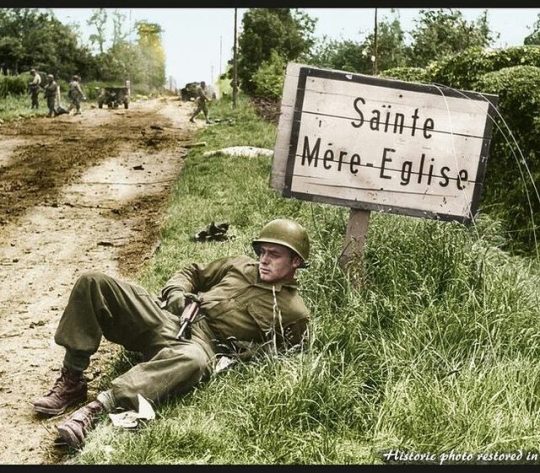
Sainte-Mère-Église lies in a flat area of the Cotentin Peninsula known locally as le Plain. It was a strategic crossroads town on the N13, the road that led to Utah and Omaha beach. Taking control of the area would also block off any German reinforcement troops coming from the south and would therefore seal off the Cotentin Peninsula. In the early hours of June 6, 1944 (between 0.50AM and 1.40AM) the pathfinders were dropped behind enemy lines in order to prepare the drop zones. At 1.40AM the men of the 82nd U.S. and the 101st Airborne Division were dropped over the Merderet River and marsh. Poor weather, low clouds and ground fog altered the visibility of the marker flares installed by the pathfinders. The drop resulted in heavy casualties for the paras. Some buildings were on fire and they lightened up the sky, making easy targets. Men landed in the houses on fire; the men hanging in trees were killed even before they could cut loose. Fortunately, they were eventually rescued by 158 paratroopers of the 3rd Battalion of the 505th Parachutist Infantry Regiment and elements from the 101st Airborne. One man landed on the town church. His name was John Steele. He was with the 505th Parachute infantery Regiment. He hung there for about 2 hours and he observed the slaughter down below. John Steele is a story on its own, and I'll do another post about him one day on IG. Later that morning, about 5.00AM, a force led by Lt. Colonel Edward C. Krause of the 505th PIR took the town with little resistance. However, heavy German counterattacks began later in the day and into the next. The men held the town until reinforces arrived from Utah beach. Sainte-Mère-Église is proud to be one of the first towns liberated on D-Day. Today the town is one big memorial. I've been there this summer and visited the museum and the church.
2 notes
·
View notes
Text
PTSD THE INVISIBLE WALL
PTSD THE INVISIBLE WALL
Photo taken after the deployment to Tallil Air Base, Iraq 1989-1991 Desert Shield & Desert Storm.
Over thirty years ago I served in combat as a Paratrooper with Bravo Company 1/505th P.I.R. in the 82nd Airborne Division at Fort Bragg. I didn’t realize I was suffering from PTSD until my wife encouraged me to seek help. At that time it was more of a threat “get help or I am gone” type of deal.…
View On WordPress
#Bravo Company 1/505th PIR#PTSD#PTSD the invisible war#Returning from war#Veterans#Veterans overcoming PTSD
0 notes
Photo

WW2 D-DAY Paratrooper 505th PIR 82d ABN DIV US ARMY M-1939 pat. Brass DOG TAG
BUY IT NOW – WW2 D-DAY Paratrooper 505th PIR 82d ABN DIV US ARMY M-1939 pat. Brass DOG TAG
0 notes
Text
Dropzone "Nan" 505th PIR, 82nd Airborne Division
Dropzone “Nan” 505th PIR, 82nd Airborne Division
Are you looking to relive the past? Then visit the Dropzones of the 82nd Airborne Division at Groesbeek! The the two dropzones at Groesbeek are very easy to visit today!
Dropzone “Nan” was originally assigned to the 505th PIR and dropzone “Tare” to the 508th. However, due to problems mid-air, the 2nd battalion of the 505th had to jump at dropzone “Tare”.
Here’s a map with an overview of locations…
View On WordPress
0 notes
Photo
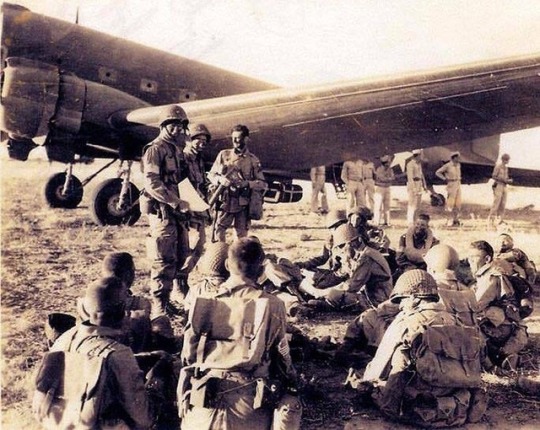
THIS DAY IN ALL AMERICAN HISTORY: 14 SEPTEMBER 1943: WWII: The 505th PIR parachuted onto the Salerno Beachhead as part of the Division’s second combat airborne operation. The Salerno airborne assault was in support of the 5th Army which was in danger of being pushed back into the sea. The 505th followed the 504th, which had been dropped into Salerno the previous night. (at Asheville Mall Recruiting Center)
0 notes
Link
Holy crap Nate and I know the 2LT. It's our friends cousin. True blued Ranger School now a EIB. Pretty cool. Guy was always a beast.
#u.s. army#army#505 PIR#505th PIR#82nd Airborne Division#82nd Airborne#paratrooper#paratroopers#soldier#soldiers#expert infantryman badge#EIB
3 notes
·
View notes
Photo

Here is the route we will take on Thursday at 05:00 to get to Conneaut, OH. I am incredibly excited, as well as terribly nervous as to how this trip will go.
-(Pvt) Dan Nelson
#ww2#ww2 history#ww2 reenacting#airborne#82ndairborne#505th#PIR#living history#ww2 living history#ohio#summer#beach#war#rifle#dday#dday ohio#conneaut
2 notes
·
View notes
Photo

Soon to be WWII style 505th PIR Parachutist Badges. Yes I can and will be doing the other Regiments soon. (at MADDOG SILVER) https://www.instagram.com/p/BncTxcVH58G/?utm_source=ig_tumblr_share&igshid=5qt1bhoy137e
0 notes
Photo



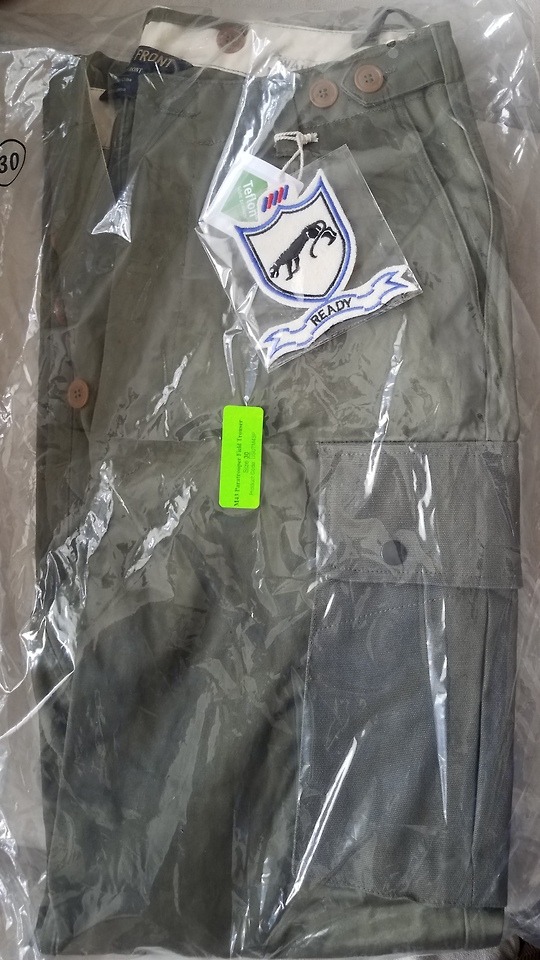

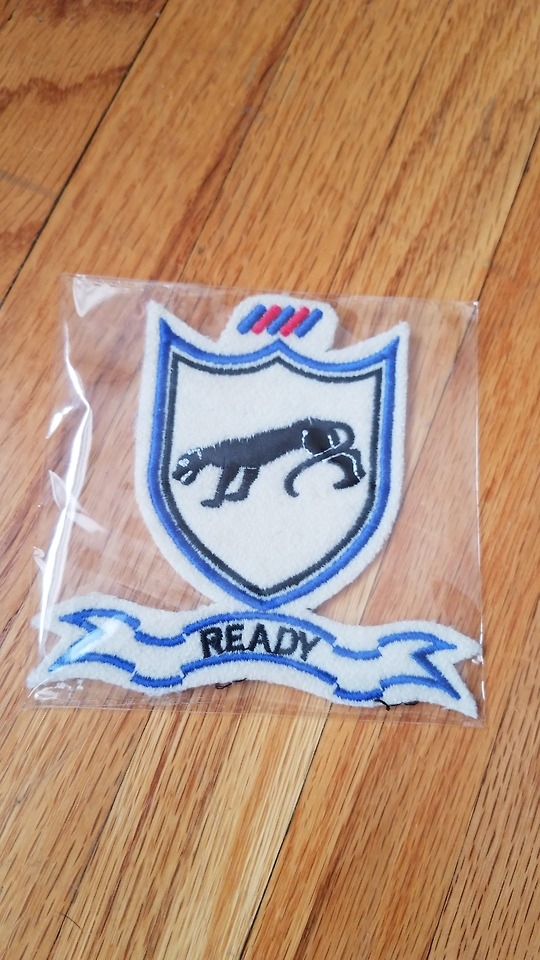

Happy Birthday to me!
I was gifted a few dollars for my birthday last month and decided to buy a new pair of M43 Trousers, with Rigger Modifications for Airborne soldiers from At the Front, as well as a patch for the 505th PIR. I can see myself immediately using the trousers at Rails to Victory next month in Elgin, IL, and the patch is just fun to have.
#army#uniforms#reenactment#WW2 Reenacting#ww2 living history#505th#82nd Airborne#ready#unboxing#george company
1 note
·
View note
Photo

Me; dressed in a standard M1942 jump uniform, PX Overseas cap with EM combined service insignia on it, holding an M1 Garand Rifle.
edited by Ben Nelson of @ablecojournal.
#reenactment#ww2#ww2 history#ww2 history blog#blog#photo#photograph#black and white#history#rifle#gun#military#82ndairborne#airborne#505th#PIR#george company#salute to veterans#south bend#indiana
0 notes